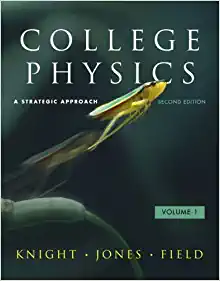Question
28. If the Sun's mass were 27 times its current value, and Earth's period of revolution around the Sun retained its current value, then the
28. If the Sun's mass were 27 times its current value, and Earth's period of revolution around the Sun retained its current value, then the average distance from Earth to the Sun, in terms of its current value, r, would be (a) 9r (b) 9 (c) 3 (d) 3r (e) none of these
210. If the distance between a spacecraft and Jupiter increases by a factor of 2 and the mass of the satellite decreased by a factor of 2, the magnitude of Jupiter's gravitational force at the position of the spacecraft: (a)changes by a factor of 2 (b) changes by a factor of 0.125 (c) remains the same (d) changes by a factor of 4
211. Satellite A has twice the orbital speed of Satellite B. What is the ratio of their orbital radii, RA/RB? (a.) 1/4 (b.) 1/2 (c.) 2 (d.) 4
212. 2. Satellite C has a mass twice the mass of Satellite D, same orbital radius. What is the ratio of their orbital speeds, vC/vD? (a.) 1/4 (b.) 1/2 (c.) 1 (d.) 4
214. Suppose a planet has half the mass of Earth but the same radius. An astronaut stands on the surface of the planet and drops a rock from a height of 2.4 m. How much longer does it take the rock to hit the ground on that planet than it would on Earth? (a) 1.2 times longer (b) 2 times longer (c) 2 times longer (d) 4.8 times longer
215. 15. Which statement is true for a point outside a spherical object? a. The strength of the gravitational field depends on how the mass is distributed within the sphere. b. The direction of the gravitational field depends on how the mass is distributed within the sphere. c. The strength and the direction of the gravitational field depends on how the mass is distributed within the sphere. d. The strength and direction of the gravitational field behave as if all of the mass is concentrated at the centre of the sphere
213. 13. A satellite in geosynchronous orbit has a period of revolution of (a) 1.5 h (b) 1.0 h (c) 24 h (d) 365.26 d (e) none of these
Step by Step Solution
There are 3 Steps involved in it
Step: 1

Get Instant Access to Expert-Tailored Solutions
See step-by-step solutions with expert insights and AI powered tools for academic success
Step: 2

Step: 3

Ace Your Homework with AI
Get the answers you need in no time with our AI-driven, step-by-step assistance
Get Started


